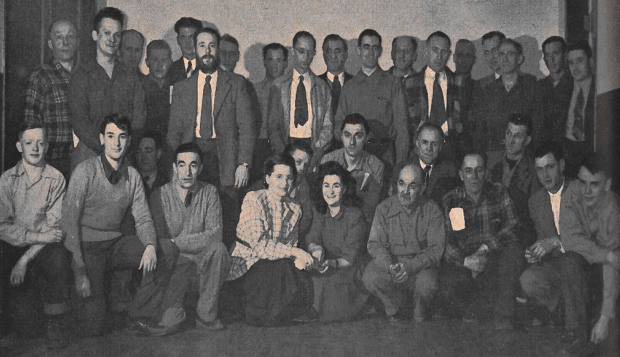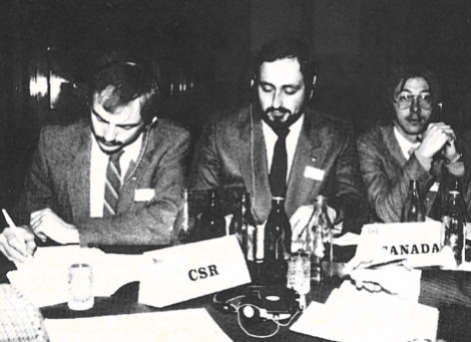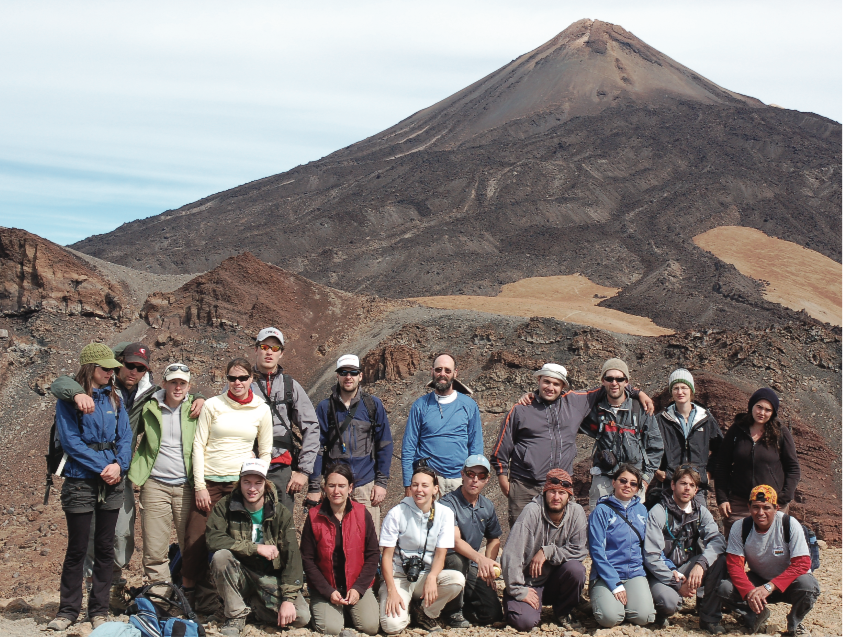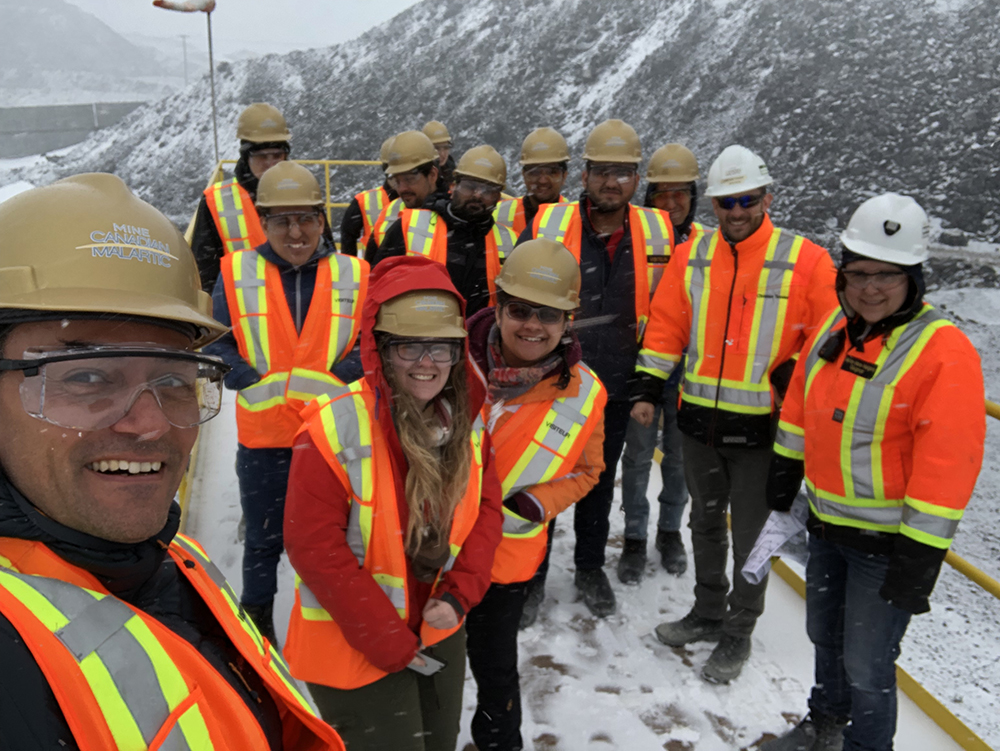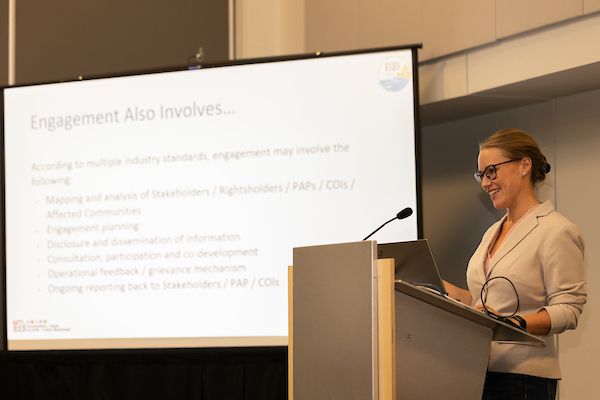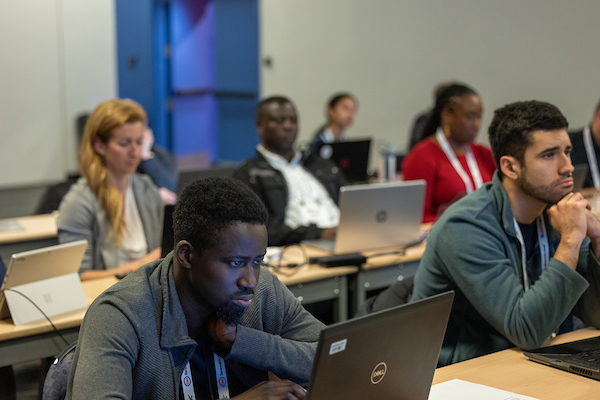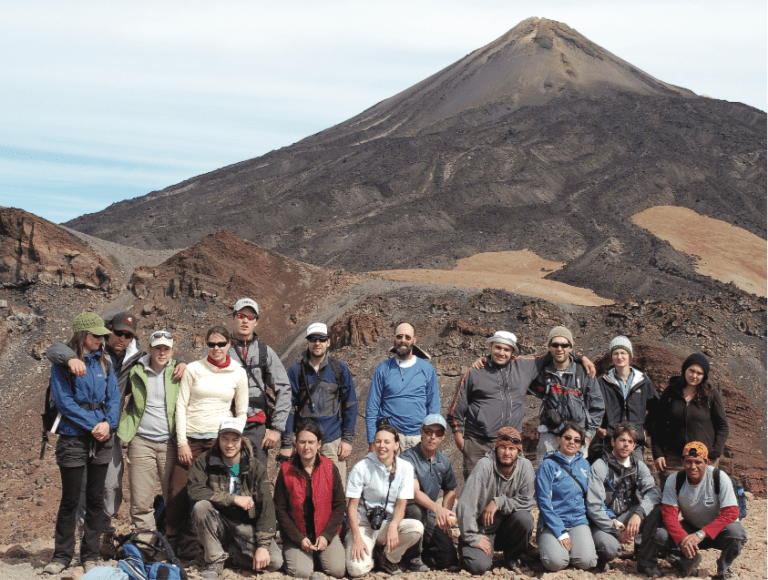
Earth sciences students from the University of Quebec (Chicoutimi & Montreal) on the field trip of a lifetime: the little known but still active El Teide–Pico Viejo stratovolcanoes within the Las Cañadas caldera complex on the Canary Islands, organized by Wulf Mueller in October 2007. Many students in the group were working on ancient deformed volcanic areas in Canada (e.g. the Abitibi greenstone belt).
In the mid-1800s, with the development of efficient transportation in Canada and exciting technological innovations such as the invention of dynamite, compressed air systems, and increasingly powerful drills, crushers and grinders, the stage was being set for the transformation of mining from a brute-force activity to a more efficient and sophisticated science. This period has been called the “professionalization of mining engineering.”
The numerous mines that were developed in Canada in the nineteenth century created a demand for local engineering talent. Until that time, the only alternative was to recruit mining engineers and other professionals from established schools in Europe and the United Kingdom. In North America, the first School of Mines opened at Columbia University, New York in 1864. The second program—the first in Canada—was established at McGill University in Montreal in 1870, followed by the Kingston School of Mining and Agriculture at Queen’s University in 1892, and various others.
During this time, professionals also started feeling the need to come together to exchange ideas and information, mainly through professional associations: the Gold Miners Club of Nova Scotia (which to this day remains in existence as the Mining Society of Nova Scotia); the General Mining Association of the Province of Quebec; the Ontario Mining Institute and the British Columbia Association of Mining Engineers.
From the union of all the provincial mining institutes, CIM was born in 1898.
With its beginnings so deeply rooted in the recognition of the industry’s need for professional development, it is no wonder that CIM has such a long and proud tradition of providing its members with myriad opportunities for learning and advancement: annual conferences, seminars, courses and of course its publications—technical papers, presentations and proceedings.
In the first three decades after its birth, CIM expanded with new specialized branches and divisions. In 1934, the Industrial Minerals Section was formed, followed by the Coal Division (1944); the Metallurgy and Geology Divisions (1945); the Metal Mining Division (1946); the Petroleum and Natural Gas Division (1949); and the Mechanical-Electrical Division (1961).
These new technical divisions, created by CIM for members with specific interests, was perfectly timed for the number of mining professionals and academics who started to specialize in specific fields following the post-World War II incentives for post-secondary education.
In 1968, the CIM Distinguished Lecturers program started, and for over five decades has continuously provided an annual lineup of individuals who have shared their knowledge with the mining community.
In 1973, the CIM Foundation was established “to provide the means of creating, developing, and maintaining a program of continuous education for the members of the Institute.” The Foundation achieves its mandate by supporting educational programs and activities such as the Distinguished Lecturers program, promoting the industry as an enviable career choice, and providing scholarships.
In 1998, the year of its centennial, CIM published pPride and Vision, a book chronicling the Institute’s past, which was sent to libraries around the country to inform the public about the Canadian mineral resource sector and CIM over the previous century. Two new scholarships were also established through the CIM Foundation.
In 2005, CIM held its first Mining for Society (M4S) event, which over the next ten years taught children all over Canada about mining, minerals, metals and materials in fun, interactive seminars.
In 2019, CIM took professional development to another level with new offerings: CIM Academy, and the launch of a monthly webinar series, followed in 2020 by Mining Now, a regular podcast developed in collaboration with Crownsmen Partners.
In the summer of 2023, CIM will launch an expanded Professional Development section on its website, showcasing all the learning opportunities available for members and non-members alike. In the meantime, we hope you enjoy this brief history of the professionalizaton of mining in Canada, and these snapshots from the CIM scrapbook.
Sources: A Century of Achievement by John Udd; CIM Bulletin and CIM Magazine.
